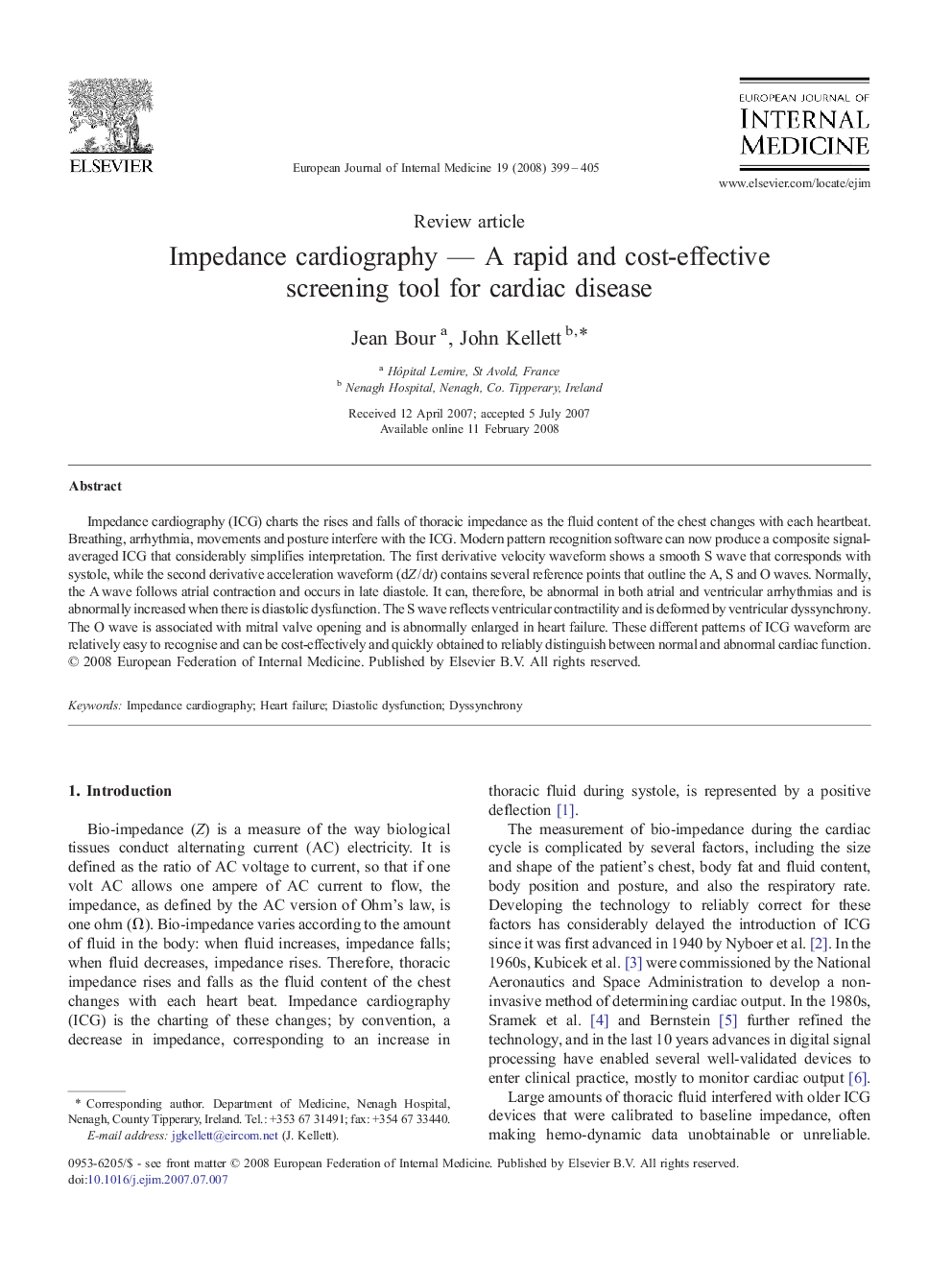| Article ID | Journal | Published Year | Pages | File Type |
|---|---|---|---|---|
| 3467957 | European Journal of Internal Medicine | 2008 | 7 Pages |
Impedance cardiography (ICG) charts the rises and falls of thoracic impedance as the fluid content of the chest changes with each heartbeat. Breathing, arrhythmia, movements and posture interfere with the ICG. Modern pattern recognition software can now produce a composite signal-averaged ICG that considerably simplifies interpretation. The first derivative velocity waveform shows a smooth S wave that corresponds with systole, while the second derivative acceleration waveform (dZ / dt) contains several reference points that outline the A, S and O waves. Normally, the A wave follows atrial contraction and occurs in late diastole. It can, therefore, be abnormal in both atrial and ventricular arrhythmias and is abnormally increased when there is diastolic dysfunction. The S wave reflects ventricular contractility and is deformed by ventricular dyssynchrony. The O wave is associated with mitral valve opening and is abnormally enlarged in heart failure. These different patterns of ICG waveform are relatively easy to recognise and can be cost-effectively and quickly obtained to reliably distinguish between normal and abnormal cardiac function.
